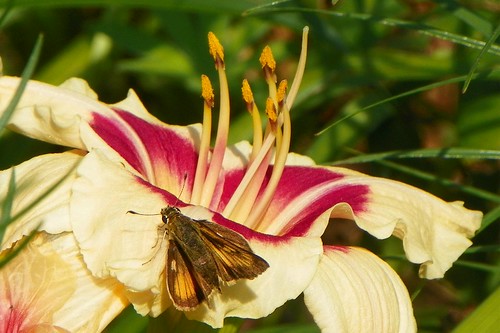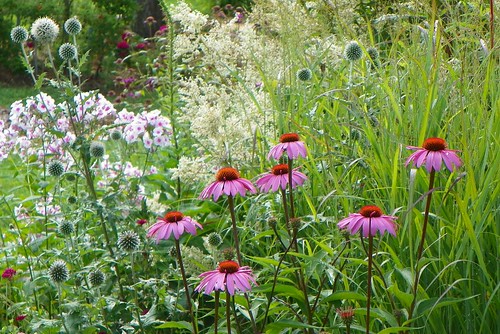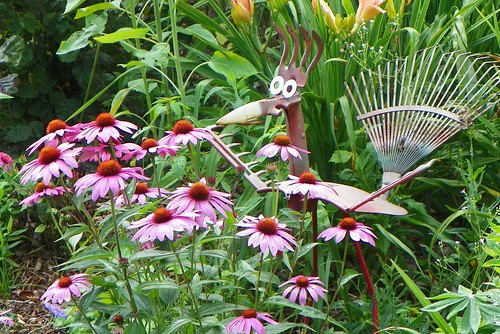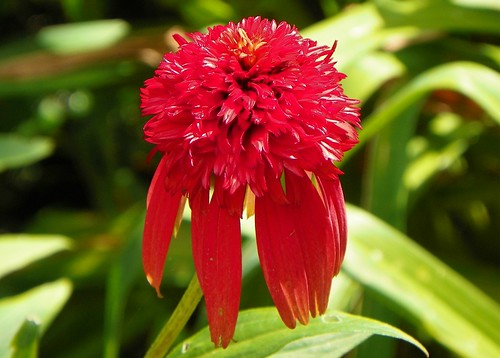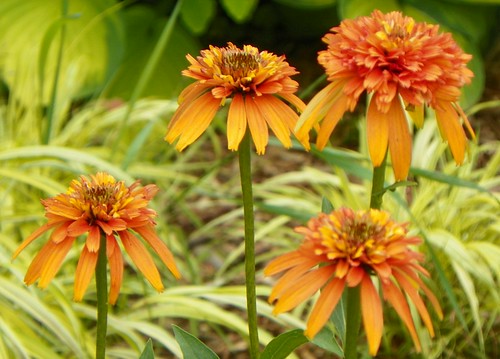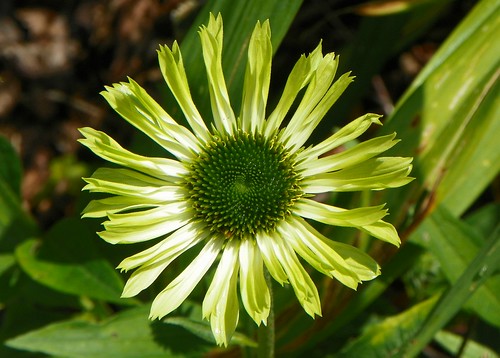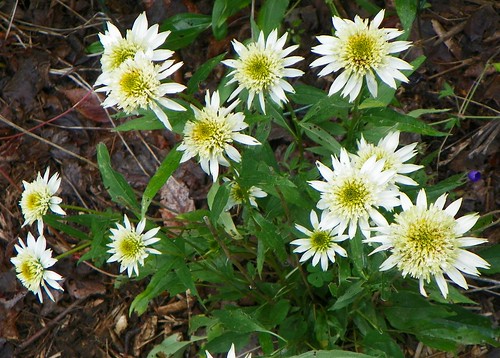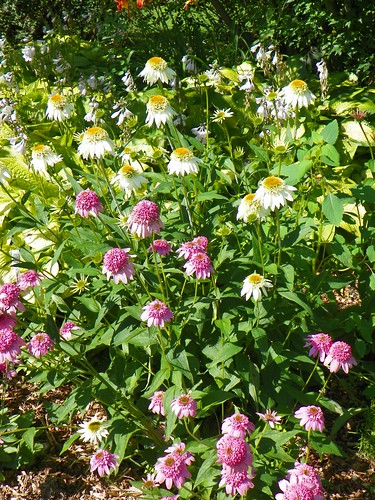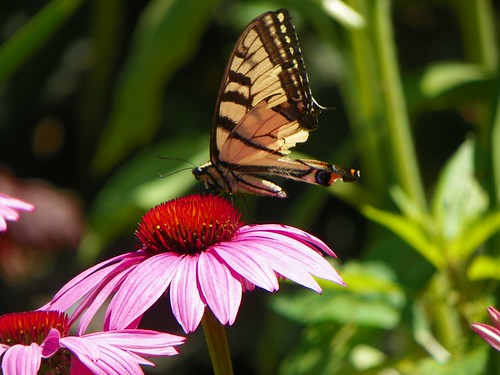
Looking back at posts from earlier years, I see that I usually do an entry about coneflowers every summer. This year, the summer has zipped past and we are sliding into autumn. I just have time to get my annual echinacea post looked after.
After daylilies, coneflowers may be my favorite garden flowers, though it would be hard to choose. I enjoy both the traditional varieties and newer hybrids that come in a variety of shapes, sizes and colours. Pictured above are my oldest plants, the reliable Magnus on the right, and slightly shorter Ruby Star on the left. They combine nicely with daylilies, grasses and other perennials for a natural look.
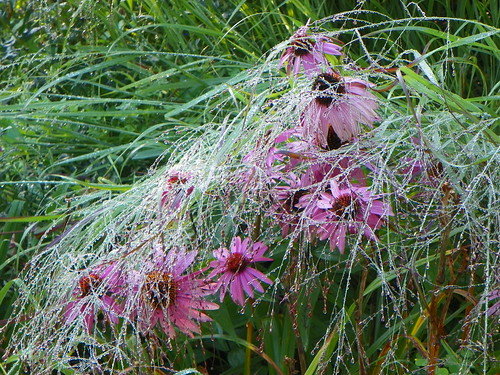
Ruby Star
I took this photo of Ruby Star one morning after a night of rain caused the heads of Panicum virgatum ‘Prairie Sky’, switchgrass or panic grass, to droop over the flowers like a sparkling veil. Once the sun dried the grass, it lifted its head from the flowers.
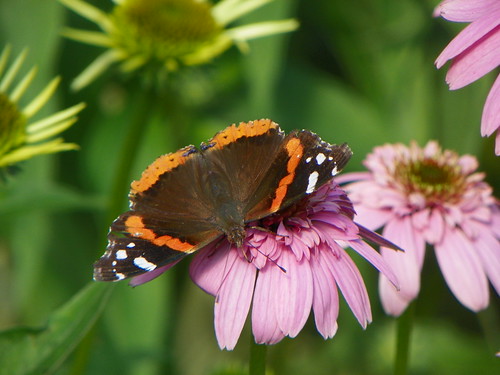
Secret Romance and Red Admiral
My favorite thing about coneflowers is the way they attract butterflies. I have found that all varieties, even the puffy new hybrids appeal to an assortment of butterflies. Pictured above is a Red Admiral (Vanessa atalanta) visiting Secret Romance.
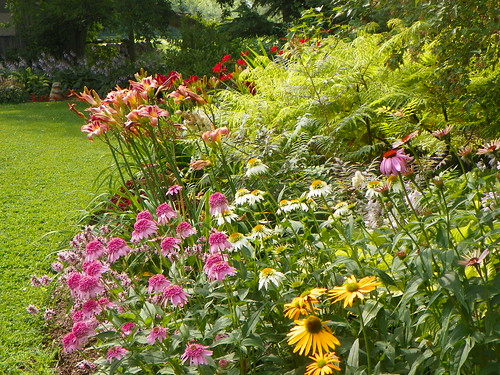
Here’s a bank of coneflowers performing in the garden. Echinaceas bloom over a number of weeks. This grouping features Secret Romance on the left, Milkshake, and Now Cheesier. The traditional coneflower at the back of the grouping is Prima Donna. I tried Now Cheesier in three locations in the garden before finally hitting on a spot that allowed it to thrive. Gardening is like real estate. It’s all about location, location, location!
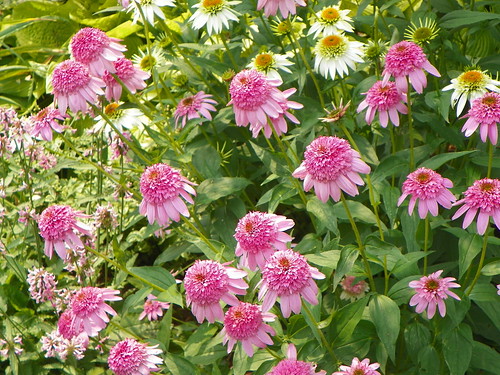
Secret Romance
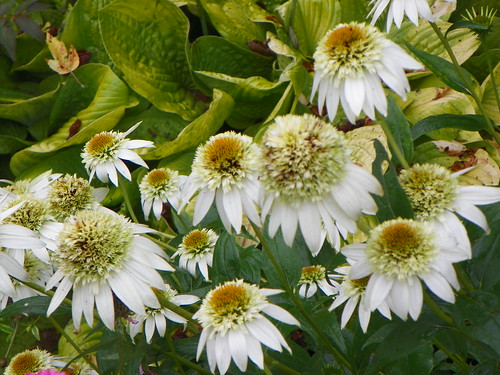
Milkshake
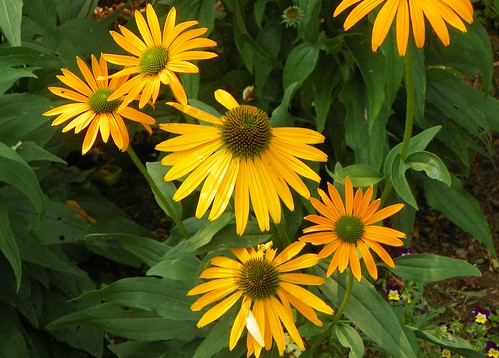
Now Cheesier
This entrance to a garden path is quite heavily shaded. It receives a few hours of direct sun from about mid afternoon, so is not ideal for coneflowers. However, a couple of my favorites do well here, the bright red mophead Hot Papaya and the amazingly green Green Jewel.


Hot Papaya
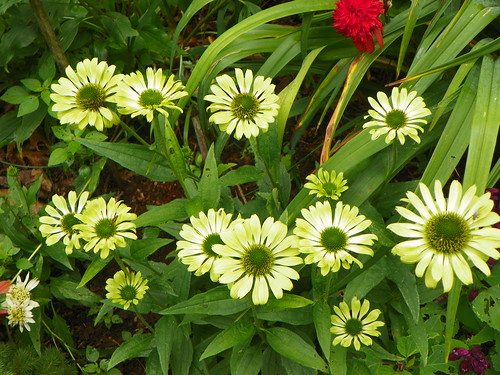
Green Jewel
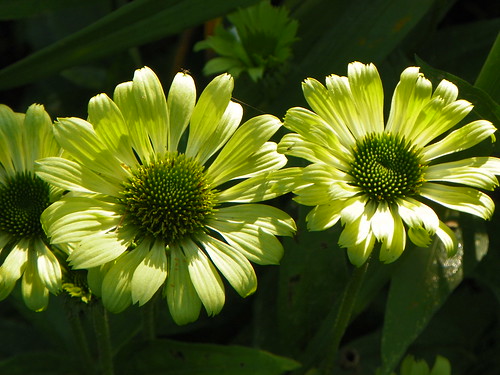
Green Jewel
One of the first double coneflowers to hit the market was Doubledecker, which produces a funny cap of stray petals at the top of its cone. It’s not very reliable at producing even these few stray petals. Oh how things have changed since those early days!
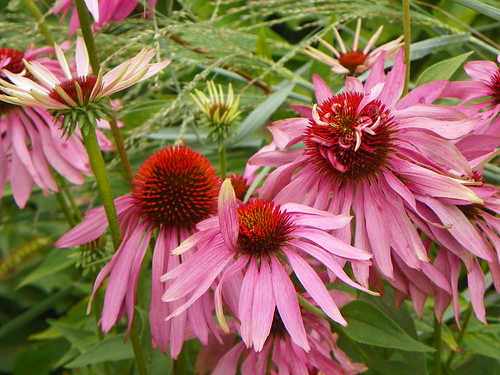
Doubledecker
Here’s the orangey coneflower, Marmalade.

Marmalade
I try to add a new variety or two to the garden each year. This year, I planted Supreme Cantaloupe in the spring. This photo illustrates the way the flowers start out flat and gradually change colour and form as they mature. Meteor Yellow is also new. These two plants have yet to survive a trial by winter.
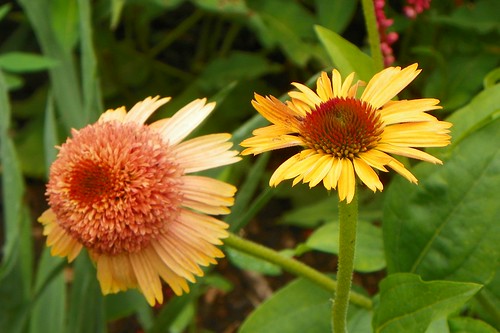
Supreme Cantaloupe
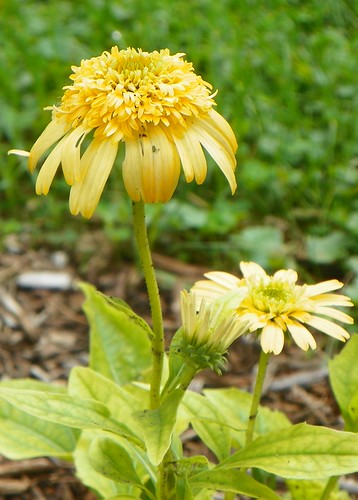
Yellow Meteor
I’ll close with two traditional varieties that do well for me, the white Alba and the tidy 2-foot tall Prairie Splendor.

Alba
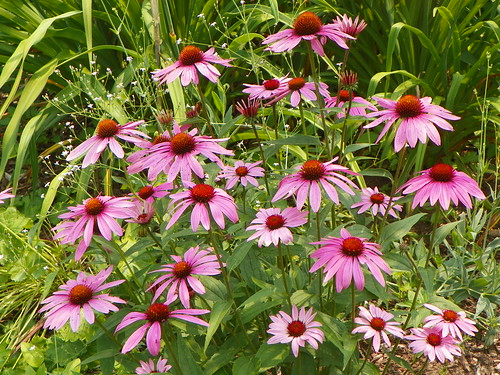
Prairie Splendor
